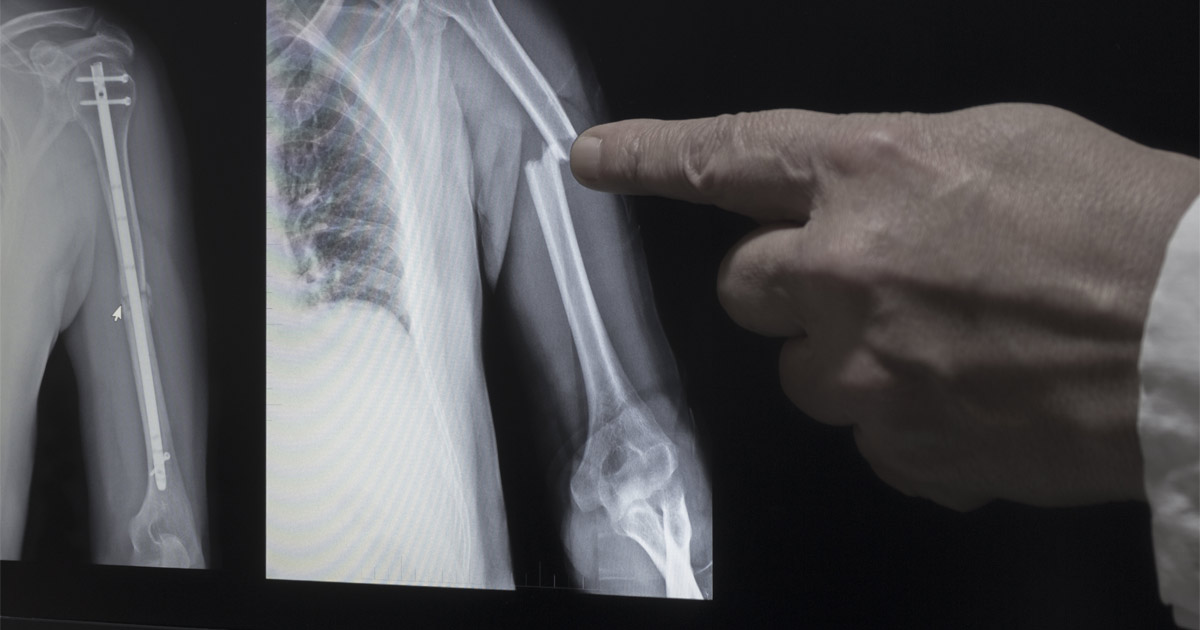The sheer force and impact felt in a car accident can leave anyone with severe injuries, including bone fractures. With over 200 bones in the human body, it is no surprise that you can suffer a mild break or a severe fracture in an accident.
There are different ways a bone can break or fracture in an accident, such as:
- Ejection from a vehicle due to not wearing a seat belt.
- Striking a part of the vehicle at the moment of impact.
- Crushing forces during the collision, whether it be a curb, another car, or a motorcycle.
- Instinctively reaching forward to brace yourself right before impact to protect your face or body.
- Being struck by the airbag at deployment or being struck by unsecured debris within the vehicle.
- Body slamming forward and then suddenly restrained back from the seat belt.
There are different types of accident-related fractures to be aware of, including:
- Avulsion: Avulsion fractures occur when the bone separates from the tendons and ligaments.
- Buckle: Buckle fractures occur in young children, in which the bone begins to break but buckles instead.
- Comminuted: This is when a bone fractures into three or more pieces and normally cannot be treated other than amputation.
- Compound: A compound fracture occurs when the broken bone pierces the skin. Not only does the break have to be treated, but bacterial infections are also possible.
- Hairline: Hairline fractures are small but can be dangerous, as they are often left untreated at first until they crack further.
- Oblique: An oblique fracture is a diagonal crack that occurs when the bone is pinched and then twisted during impact.
- Stress: Stress fractures are similar to buckle fractures, whereas one side of the bone bends but the other side fractures.
- Transverse: Transverse fractures are when a bone breaks into two separate pieces, often in a right-angle position.
Common Bones That Can Break in Accidents
There are a variety of bones that could break in an accident, with the most common being:
- Spinal cord: Spinal fractures of the back or neck are serious and can be fatal.
- Clavicle: The clavicle often breaks in a car crash mostly due to its location. It can break simply from the force of restraint from a seat belt.
- Pelvic bone: This is more common in motorcycle accidents, but pelvic bones can be fractured in severe car accidents as well.
- Fibula: The fibula is the lower part of the leg, while the femur is the upper part, and both are capable of breaking from the sheer force of a crash.
- Skull: The skull can suffer a fracture when the head collides with parts of the vehicle, such as the window, dashboard, or steering wheel.
- Facial bones: Facial bones are likely to suffer fractures during an accident, as the face can collide with dashboard or steering wheel. Bones like the nose, jaw, cheekbones, or orbital bones are likely to fracture in an accident.
- Sternum: The sternum is the breastbone that is part of the ribs that protects vital organs, like your heart or lungs. The sternum is exposed during a car accident and can collide with parts of the vehicle.
Mount Holly Car Accident Lawyer at the Law Office of David S. Rochman Can Help You if You Have an Accident-Related Bone Fracture
Because of the sheer force of a car accident, it is not uncommon to suffer a broken or fractured bone. If you have been injured in an accident, contact our Mount Holly car accident lawyer at the Law Office of David S. Rochman. Call us at 856-751-2345 or fill out our online form for a free consultation. Located in Mount Laurel, New Jersey, we proudly serve clients in Burlington County and the surrounding areas.


